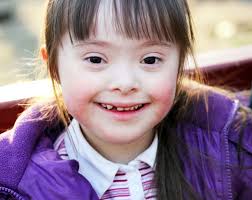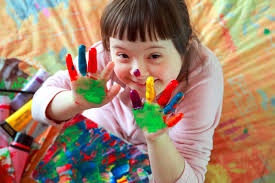The family of a child with special needs The couple is waiting for the arrival of their first child as a pivotal event that affects the structure, lifestyle and formation of the family, and they prepare for that event with a distinctive festive atmosphere in which their parental memory records all the details, scenes and moments of pregnancy, and the scene is repeated every time the family heralds a new pregnancy in which the couple provides comfort Preparing to receive their new baby. The arrival of any child, male or female, means a change in the family and a new arrangement in its components and roles, and even in its daily and monthly expenses and expenses. Denial and estrangement. The birth of a child with special needs leads to different emotional responses in the spouses and children, and the nature of the parents’ response is affected by many factors, including the type and degree of disability, the parents’ culture, their level of education, age group, financial condition, social outlook and much more. The responses of families of children with disabilities vary between shock, perception, acceptance, and emotional withdrawal, and the family is then under the influence of a series of pressures and confusion, which requires the intervention of an individual from outside the family who guides them on the proper ways to deal with the new family event, and explains to them the needs of the stage and its investment mechanisms to live with it. The newborn and his integration into the family class.
Children with special needs The term “special needs” appeared in the nineties of the twentieth century to replace the label (disabled), by which those whom God afflicted with total or partial disability in physical or mental abilities as a result of a congenital deficiency were used. The term “people with special needs” was used to denote people or Children who appear to have differences in mental, physical, or sensory abilities, or behavioral, linguistic, or educational characteristics that distinguish the bearer from normal or average children; Which means that these people need special additions that help them to live with their reality, such as some programs, devices, modifications, tools, or educational services and support services. A child with special needs is a child or an individual who cannot perform By practicing some activities, and he cannot gain experience with the methods available to the average person, educators prefer the term special needs because of its softness of expression and its distance from including negative contents and terminology represented by incapacity, disability and other repulsive concepts. The needs of the rest of society due to their lack of behavior, education, intellectual or motor activities, or otherwise, which forces them to rely on programs, tools, devices, or aids to meet their needs to carry out their normal functions in an almost normal way, and the needs vary according to the circumstances and nature of the case to include the disabled, the gifted, and the sick , pregnant women, the elderly, people with congenital deformities, and others who do not perform their activities in a normal or moderate manner. Categories of people with special needs, etc. Some people reduce the categories of special education to persons with disabilities exclusively, ignoring the many groups of society to which specific educational, educational, performance or behavioral conditions apply. The categories of individuals with special needs can be reduced to three categories: Persons with physical or mental disabilities: the disability is represented in this category. In the presence of a functional defect or mental deficiency that results in health effects that prevent the disabled person from practicing his physical or intellectual activities in a normal or moderate manner, and a barrier between him and his educational performance and his ability to perform the work that ordinary people perform to the same degree. Gifted: The gifted is defined as the individual who appears. Any of the following capabilities and aptitudes, singly or in combination: general mental ability, special academic aptitude, productive or creative thinking, exceptional leadership ability, visual or performance artistic aptitude, sensory motor ability. Gifted people are characterized by features that distinguish them from ordinary people, represented by high levels of intelligence, unique capabilities, multiple fertile tendencies, high perseverance, a strong desire for excellence, self-confidence, and social interaction. for their ideal development, which means the need for this environment for special, exceptional circumstances in which programs, tools, and support processes are employed for their care, and thus including them in special categories is logical. Unusual individuals: This term is commonly used to express children who show a clear difference from Their peers in mental, sensory, or communication abilities, and these people may be included in the category of the disabled or gifted, or they may be included independently among the extraordinary people based on the nature of their individual cases and the nature and degrees of their differences, and these people certainly need advanced programs to meet their educational and educational needs. The concept of special education is a type of education specialized in educating children with special needs, which includes a pattern of services and charity. Educational programs and modifications in curricula, means and teaching methods in response to the special needs of all students who cannot cope with the requirements of regular education programs, whether those who face difficulties that negatively affect their ability to learn, or individuals with outstanding abilities and talents. This type of education meets the needs of the child in a manner that takes into account the individual differences among children in terms of the degree of disability. Special education aims to help learners reach the maximum level of what their materials allow in terms of achievement and adaptation. This teaching may take place in the regular classroom or in special educational settings.



